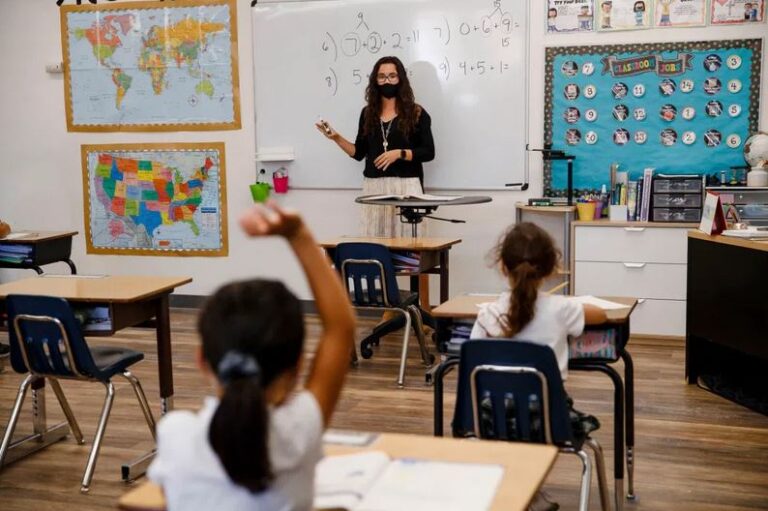
The Centers for Disease Control and Prevention (CDC) on Friday eased guidelines for social distancing in schools. They are now saying that 3 feet is acceptable for K-12 students, as long as everyone wears a face mask.
Since older students are more likely to get infected, the CDC recommends middle and high school students in “high risk” communities continue to follow the 6-feet rule. Students of all ages are encouraged to remain 6 feet apart when engaging in activities such as choir, sports, and band.
The new guidelines are expected to help speed the reopening of schools across the country, but some teachers aren’t buying it.
“We are concerned that the CDC has changed one of the basic rules for how to ensure school safety without demonstrating certainty that the change is justified by the science and can be implemented in a manner that does not detract from the larger long-term needs of students,” says Becky Pringle, president of the National Education Association.
The American Federation of Teachers is “concerned that this change has been driven by a lack of physical space rather than the hard science on aerosol exposure and transmission,” adds union president Randi Weingarten.
Critics say the CDC is wasting its time and insist that all schools should open as soon as possible.
Scott Gottlieb, a former FDA Commissioner, criticized the CDC for “arbitrating three feet versus six feet” when they should be focused on the new coronavirus variants.
“[Children] have been disenfranchised by a completely failed public policy of school closures, which has been a disaster,” said Gottlieb.
Texas Senator Ted Cruz expressed similar concerns, blasting Democratic leaders who have kept school closed despite research suggesting children are relatively safe from COVID.
“I have long believed that every child deserves access to a quality education, and that should not disappear in a pandemic,” said Cruz. “Billions of dollars have now been allocated for the safe reopening of schools, and yet Democrats are choosing to ignore science-backed recommendations that support returning children back to the classroom.”
As of March 1st, roughly 42% of children K-12 were in the classroom five days a week.
That leaves a majority of students learning virtually or not at all.
Research shows that isolation, excessive screen time, and the inability to participate in sports can have severe impacts on students, including decreased academic achievement, eye strain, obesity, and mental health problems.
As noted by the CDC, there has been a significant increase in mental health emergency room visits by children ages 5-17 during the past year.
For that same timeframe, only 213 children ages 5-17 have died from COVID. This is less than influenza and suicide.
As noted by The Hill, these negative effects are most likely to impact children of poor and minority families.
“Our choice to not prioritize the well-being of our children, especially the most disadvantaged, will be felt for decades…Every pandemic has a group that has been disproportionately affected and, when it comes to COVID-19, we will likely look back and see it was our children, our elderly, and our poorest.”